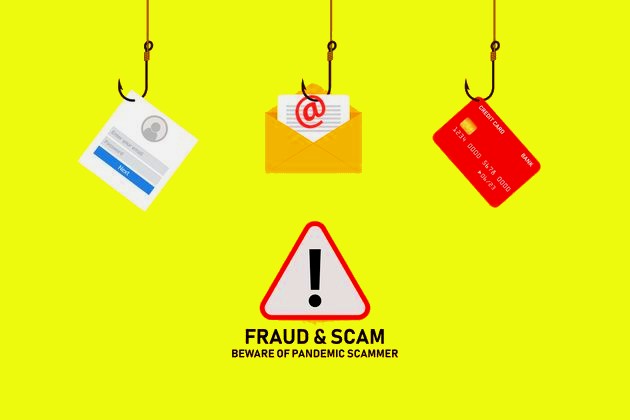What is Phishing? How to Protect Yourself From Fraudulent Emails | Complete Security
Technology: Do not click on this email! Here's everything you need to know in this guide to phishing, including how to protect yourself against one of the most common forms of cyberattack.
Phishing, a Definition
Usually carried out through email - although this type of attack also includes phone calls (known as "vishing"), social media, messaging services (aka "smishing") and applications - an attack phishing scam tries to trick the target into doing what the scammer wants. This could be passing on passwords to facilitate hacking a business or changing bank details so that payments go to scammers instead of going to the correct account.
Phishing is also a popular method for cyber attackers to deliver malware, by encouraging victims to download a document or visit a link that will covertly install the malicious payload in attacks that could distribute Trojans, ransomware, or all kinds of damaging and disruptive attacks.
The precise purpose and mechanism vary: for example, victims may be tricked into clicking a link to a bogus web page in order to persuade the user to enter personal information. It is estimated that an average of 1.4 million of these websites is created each month.
Hackers use fake social media profiles, emails, and the like to establish rapport with the victim for months or even years in cases where specific people are targeted for data they would only hand over to others. people you trust.
This data can range from personal or corporate email address and password, to financial data such as credit card data or online banking references, or even personal data such as date of birth, address and social security number. In the hands of scammers, all of this information can be used to carry out scams like identity theft or using stolen data to buy things or even sell private information on the Dark Web. In some cases, this is done for the purpose of blackmail or to embarrass the victim.
In other cases, phishing is one of the tools used for espionage or by state-backed hacker groups to spy on opponents.
How Does a Phishing Attack Work?
A basic phishing attack attempts to trick the user into communicating personal data or other confidential information, and email is the most common method of performing these attacks. The number of emails sent each day makes it an obvious attack vector for cybercriminals. An estimated 3.7 billion people send approximately 269 billion emails every day. Symantec Researchers Suggest that nearly one in 2,000 emails are phishing, which means that approximately 135 million phishing attacks are attempted each day.
Most people just don't have the time to carefully analyze every message that arrives in their inbox - and that's what phishers seek to exploit in a number of ways.
Scams vary in their targets - some target reckless consumers. In this case, the subject line of the email is designed to grab the attention of the victim. The most common phishing campaign techniques are to offer prizes won in fake contests, such as sweepstakes or contests. There is obviously no price and all that happens is the victims are putting their personal data in the hands of hackers.
Other scam attempts, usually more sophisticated, target business users. In this case, attackers can also pose as a member of the same organization or one of its suppliers and ask you to download an attachment that they believe contains information about a contract or a deal. In some cases, the goal may be to collect personal data, but in many cases, it is also used to deploy ransomware.
Attackers often use high-profile events as bait to achieve their goals. For example, in 2020 cybercriminals widely sent emails purported to contain information about the coronavirus in order to lure people. Cybercriminals also attempted to use the 2020 US presidential election as a means of attack.
One common technique is to provide a Microsoft Office document that requires the user to allow macros to run. The message accompanying the document is intended to trick the potential victim into asking them to enable macros to allow the document to be properly viewed, but in this case, it will allow rogue hackers to deliver their payload of malware.
Email is a key communication tool in any modern company. Unfortunately, it can also be a channel for the spread of various threats - from unscrupulous marketing campaigns with an abundance of spam to spear-phishing for financial fraud and hacking of company infrastructure. Protegent360 Complete Security for Mail Servers is a reliable first line of defence for the company: it filters out incoming spam and protects users from emails with malicious attachments, fraudulent requests and phishing links, as well as helps protect confidential data from leaks outside the corporate network.




Comments
Post a Comment